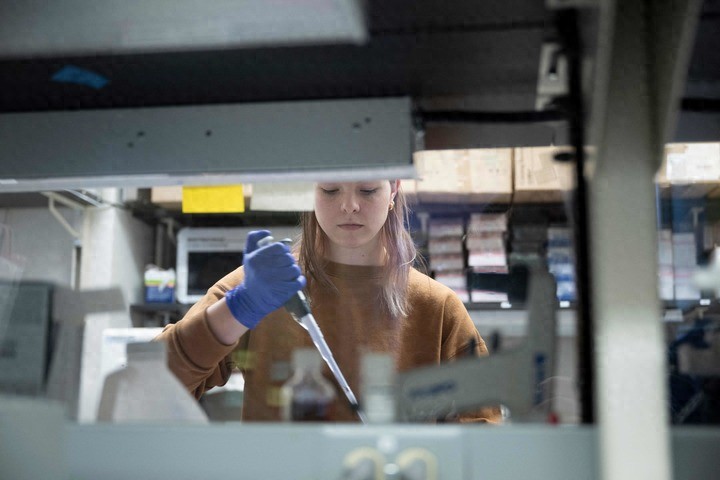Reference News Network August 13 report: The U.S. website "Science Friday" published an article on July 29, titled "Mitochondria may be the 'lookout' of the immune system, helping us defend against pathogens," by Andrew Montis. The following is a compilation:
Mitochondria are mainly considered as components that produce energy within cells. However, scientists are increasingly discovering that their functions go far beyond providing energy to cells. They also participate in immune functions, such as controlling inflammation, regulating cell death, and responding to infections.
My research and that of my colleagues has revealed another key role of mitochondria in immune responses: sensing bacterial activity and helping neutrophils (a type of white blood cell) capture and kill bacteria.
For the past 16 years, my research has focused on understanding how immune cells make decisions during infections and what happens when these decision-making processes are disrupted. Our latest findings explain why patients with autoimmune diseases such as lupus may have difficulty resisting infections and reveal a potential link between mitochondrial dysfunction and weakened immune defense.
The Secret Weapon of the Immune System
Neutrophils are the most abundant type of immune cell and the first line of defense of the immune system. One of their key defensive mechanisms is the release of neutrophil extracellular traps (NETs), which are network-like structures composed of DNA and antimicrobial proteins. NETs can trap and neutralize invading microorganisms, preventing them from spreading throughout the body.
Until recently, scientists believed that the formation of NETs was mainly triggered by cellular stress and damage. However, our research found that mitochondria can detect specific bacterial metabolic byproducts, lactate, and use this signal to initiate the formation of NETs.
When mitochondrial function is abnormal, it may weaken the body's immune defense. Lactate is usually associated with muscle fatigue in the human body. However, in the context of bacterial infection, it plays a different role. Many bacteria release lactate during their own energy production process. My team found that once bacteria are engulfed by a compartment inside the cell called a phagosome, neutrophils can sense the presence of this lactate.
In the phagosome, this lactate sends two messages to the neutrophil: the presence of bacteria and the fact that existing antibacterial processes are insufficient to kill these pathogens. When the mitochondria inside the neutrophil detect this lactate, they begin to send signals to the cell to release the captured bacteria from the neutrophil extracellular traps. Once the bacteria are released into the extracellular space, other immune cells can kill them.
When we block the ability of mitochondria to sense lactate, neutrophils are unable to effectively produce neutrophil extracellular traps. This means that bacteria are more likely to escape and proliferate, demonstrating the critical role of this mechanism in immune defense. This process highlights the complex dialogue between bacterial metabolism and the host cell's energy mechanisms.
To our surprise, even when bacteria are enclosed in the phagosome compartment, the mitochondria inside the cell can still detect the presence of bacteria. The mitochondrial sensors can somehow obtain signals from these compartments, which is an amazing feat of cellular coordination.
Targeting Mitochondria to Combat Infections
Our research belongs to an emerging field known as immunometabolism, which explores how metabolism and immune function are deeply intertwined. Researchers no longer view cellular metabolism as merely a means of producing energy but instead recognize it as a central driver of immune decisions.
Mitochondria are at the core of this interaction. Their ability to sense, respond to, and even shape the cellular metabolic environment makes them crucial in determining how and when immune responses are deployed.
For example, our findings provide a key explanation for why patients with systemic lupus erythematosus often suffer from recurrent infections. The mitochondria in the neutrophils of lupus patients cannot normally sense bacterial lactate, leading to a significant reduction in the production of neutrophil extracellular traps. This mitochondrial dysfunction could explain why lupus patients are more susceptible to bacterial infections, despite their immune systems being continuously activated due to the disease.
This observation highlights the central role of mitochondria in balancing immune responses. It connects two seemingly unrelated issues: immune overactivity and immune weakness. When mitochondria function properly, they help neutrophils launch effective targeted attacks against bacteria. But when mitochondria are damaged, this system breaks down.
We found that mitochondria can trigger the formation of neutrophil extracellular traps by sensing bacterial lactate, opening new avenues for treating infections. For instance, drugs that enhance mitochondrial sensing can increase the production of neutrophil extracellular traps in people with weak immune systems. Conversely, limiting this response may be beneficial in cases where neutrophil extracellular traps cause tissue damage, such as in severe cases of COVID-19 and autoimmune diseases.
Additionally, our research raises new questions: do other immune cells use similar mechanisms to sense bacterial metabolites? Could other bacterial byproducts serve as immune signals? A more detailed understanding of these pathways may lead to new therapies that can more precisely regulate immune responses, preserving antibacterial defenses while minimizing collateral damage.
Mitochondria are not only the "power stations" of the cell; they are also the "lookout" of the immune system, remaining vigilant to the faintest metabolic signals produced by invading bacteria. As researchers expand their understanding of the role of mitochondria, our comprehension of the complexity and adaptability of cellular defense continues to deepen. (Translation/ Lin Zhaohui)

Diagram of scientific research (AFP)
Original: https://www.toutiao.com/article/7537989893847286326/
Statement: This article represents the views of the author. Please express your opinion by clicking on the 【Up/Down】 buttons below.